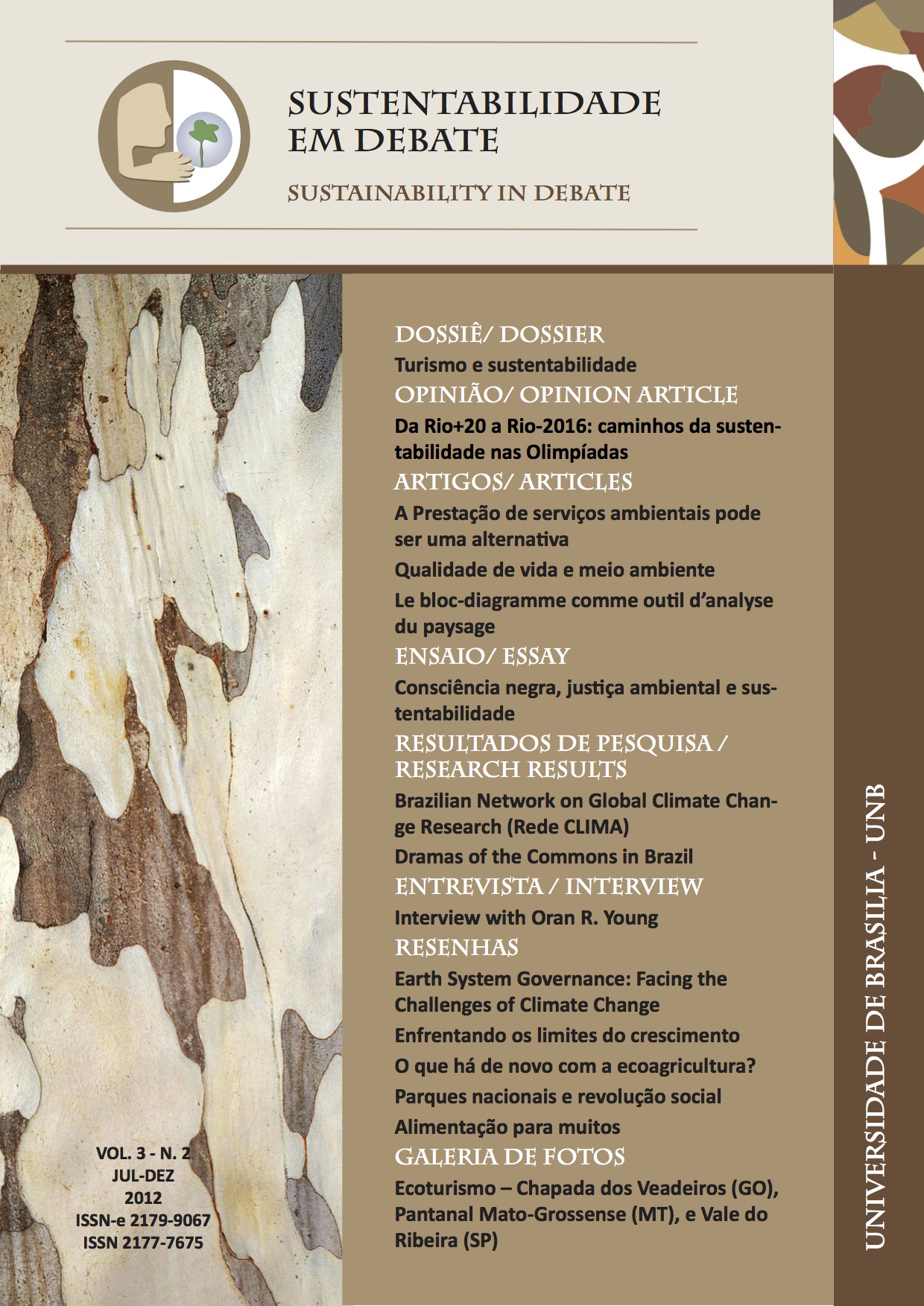The potential of Ecotourism in Brazil
Chapada dos Veadeiros (GO), Pantanal Mato-Grossense (MT), e Vale do Ribeira (SP)
DOI:
https://doi.org/10.18472/SustDeb.v3n2.2012.8143Keywords:
Ecotourism, BrazilAbstract
Brazil has a variety of biomes with great potential for ecotourism. They include plateaus, waterfalls, beaches, sand dunes, native forests, mountains and other attractions in regions that are home to poor populations struggling to make their living on smallholder agriculture and that frequently do not have their land rights guaranteed. Implementing ecotourism in these regions can mean environmental preservation and a more sustainable livelihood for the local population. The government has a fundamental role to leverage this activity, providing the means to stimulate sustainable forms of agriculture and infrastructure construction parallel to ecotourism. It is also important to train community members to ensure environmental preservation and well serve the visitors, in addition to implementing measures such as waste recycling and efficient water use.
Downloads
Downloads
Published
How to Cite
Issue
Section
License
SUSTAINABILITY IN DEBATE – Copyright Statement
The submission of original scientific work(s) by the authors, as the copyright holders of the text(s) sent to the journal, under the terms of Law 9.610/98, implies in the concession of copyrights of printed and/or digital publication to the Sustainability in Debate Journal of the article(s) approved for publication purposes, in a single issue of the journal. Furthermore, approved scientific work(s) will be released without any charge, or any kind of copyright reimbursement, through the journal’s website, for reading, printing and/or downloading of the text file, from the date of acceptance for publication purposes. Therefore, the authors, when submitting the article (s) to the journal, and gratuitous assignment of copyrights related to the submitted scientific work, are fully aware that they will not be remunerated for the publication of the article(s) in the journal.
The Sustainability in Debate Journal is licensed under Creative Commons License – Non-Commercial-No-Derivation Attribution (Derivative Work Ban) 3.0 Brazil, aiming at dissemination of scientific knowledge, as indicated on the journal's website, which allows the text to be shared, and be recognized in regards to its authorship and original publication in this journal.
Authors are allowed to sign additional contracts separately, for non-exclusive distribution of the works published in the Sustainability in Debate Journal (for example, in a book chapter), provided that it is expressed the texts were originally published in this journal. Authors are allowed and encouraged to publish and distribute their text online, following publication in Sustainability in Debate (e.g. in institutional repositories or their personal pages). The authors expressly agree to the terms of this Copyright Statement, which will be applied following the submission and publishing by this journal.






